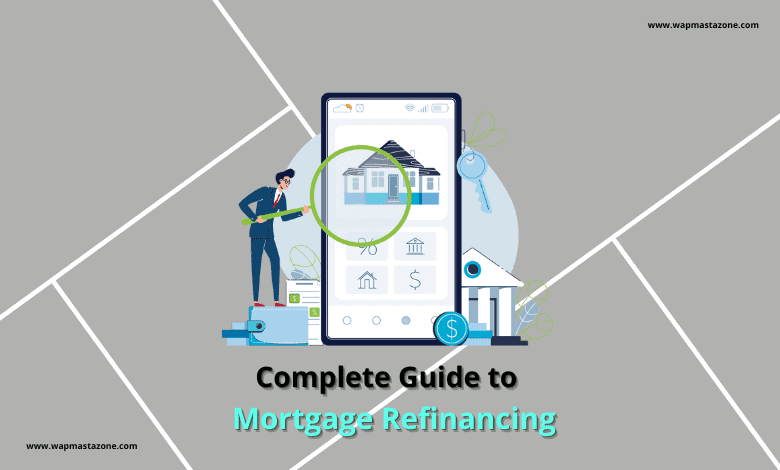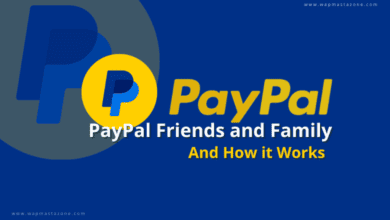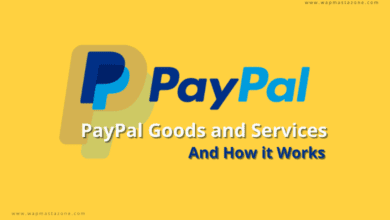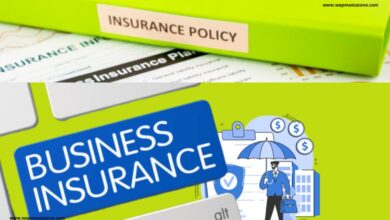
Mortgage refinancing is a process that allows homeowners to replace their current mortgage with a new one that has better terms and conditions. Refinancing your mortgage can provide you with a range of benefits, such as lowering your monthly payments, reducing the interest rate, shortening the loan term, or freeing up equity in your home. However, refinancing is not always the right choice for everyone, and it can be a complex process that requires careful consideration and planning. In this article, we will provide you with a complete guide to mortgage refinancing, including how it works, the different types of refinancing, reasons to refinance, how to find the best refinance rate, and the pros and cons of refinancing a mortgage.
Also read: 10 Types of Business Insurance
What is Refinancing?
Refinancing a mortgage is the process of replacing your current mortgage with a new one that has better terms and conditions. When you refinance your mortgage, you essentially pay off your old mortgage with a new one that has a different interest rate, loan term, or other features. Refinancing can be done with the same lender or a different lender, depending on your preferences and circumstances.
How Does Refinancing a Mortgage Work?
When you refinance your mortgage, you essentially take out a new loan to replace your existing mortgage. The new loan pays off the old one, and you start making payments on the new loan. The terms of the new loan can be different from the old one, which is why many homeowners refinance their mortgage. Here are the steps involved in refinancing a mortgage:
a. Determine your goals:
Before you start refinancing, it’s important to determine what your goals are. Do you want to lower your monthly payments, reduce your interest rate, or shorten your loan term? Once you have a clear idea of what you want to achieve, you can start looking for a refinancing option that meets your needs.
b. Check your credit score:
Your credit score is an important factor in determining whether you qualify for refinancing and what interest rate you will be offered. Check your credit score and report to make sure there are no errors or inaccuracies that could hurt your chances of getting approved for refinancing.
c. Find lenders:
When you’re ready to refinance, shop around for lenders to find the best rate and terms. You can use online comparison tools or work with a mortgage broker to find lenders that fit your needs. Compare interest rates, closing costs, and other fees to find the best refinancing option.
d. Apply for refinancing:
Once you’ve found a lender that meets your needs, you can apply for refinancing. The lender will review your application, credit score, income, and other factors to determine whether you qualify for refinancing and what rate and terms you will be offered.
e. Close on the new loan:
If you are approved for refinancing, you will need to close on the new loan. This involves signing the loan agreement, paying closing costs and fees, and transferring the funds from the new loan to pay off your old mortgage.
Also read: What is General liability insurance
Types of Mortgage Refinancing
There are several types of mortgage refinancing, each with its own set of benefits and drawbacks. Here are the most common types of mortgage refinancing:
1. Rate-and-Term Refinancing: Rate-and-term refinancing is the most common type of refinancing. It involves getting a new loan with a lower interest rate or shorter loan term, which can lower your monthly payments or reduce the total amount of interest you pay over the life of the loan.
2. Cash-Out Refinancing: Cash-out refinancing allows you to tap into your home’s equity and take out a new loan that is greater than the amount you owe on your current mortgage. This can provide you with cash that you can use for other expenses, such as home renovations, debt consolidation, or other investments. However, cash-out refinancing typically comes with a higher interest rate and fees than rate-and-term refinancing.
3. Streamline Refinancing: Streamline refinancing is a type of refinancing that is available for government-backed loans, such as FHA or VA loans. Streamline refinancing is designed to make the refinancing process faster and easier, with fewer requirements and less paperwork. However, streamline refinancing typically comes with a slightly higher interest rate than traditional refinancing.
4. Adjustable Rate Mortgage (ARM) Refinancing: Adjustable rate mortgage refinancing is a type of refinancing that allows you to switch from a fixed-rate mortgage to an adjustable rate mortgage, or vice versa. This can be useful if you want to take advantage of lower interest rates or if you want to lock in a lower rate before it increases.
Also read: What is Business Liability Insurance?
Reasons to Refinance
There are several reasons why homeowners may choose to refinance their mortgage, including:
a. Lowering monthly payments: Refinancing can lower your monthly payments by getting a lower interest rate, extending the loan term, or both.
b. Reducing total interest payments: Refinancing can reduce the total amount of interest you pay over the life of the loan by getting a lower interest rate or shorter loan term.
c. Tapping into home equity: Cash-out refinancing allows you to access your home’s equity and use the cash for other expenses, such as home renovations or debt consolidation.
d. Switching from an adjustable-rate mortgage to a fixed-rate mortgage: Refinancing from an adjustable-rate mortgage to a fixed-rate mortgage can provide you with stability and predictability in your monthly payments.
e. Consolidating debt: Refinancing can help you consolidate high-interest debt, such as credit cards or personal loans, into a lower-interest mortgage.
Also read: Maximizing Your Startup’s Potential with a Premium Domain Name
How to Find the Best Refinance Rate
Finding the best refinance rate requires some research and preparation. Here are some tips for finding the best refinance rate:
a. Check your credit score: Your credit score is an important factor in determining what interest rate you will be offered. Check your credit score and report to make sure there are no errors or inaccuracies that could hurt your chances of getting a good rate.
b. Look for lenders: Don’t just settle for the first lender you find. Shop around for lenders and compare interest rates, fees, and other terms. You can use online comparison tools or work with a mortgage broker to find lenders that fit your needs.
c. Consider different loan terms: Different loan terms can have different interest rates. Consider whether you want a shorter or longer loan term and how that will affect your interest rate.
d. Consider points and fees: Points and fees can add up quickly and increase the total cost of refinancing. Make sure you understand all the fees and costs associated with refinancing and consider how they will affect your overall savings.
Also read: Complete Guide to Domain Flipping
7 Things to Know Before You Refinance Your Mortgage
Refinancing your mortgage can be a great way to save money on monthly payments or reduce the overall interest paid over the life of your loan. However, before you jump into a refinancing deal, there are several key things you should know to make sure you’re making the right decision for your financial situation.
1. Know Your Home’s Equity
The first thing to consider when refinancing is the amount of equity you have in your home. Equity is the difference between the current value of your home and the outstanding balance on your mortgage. You can calculate your home’s equity by subtracting the amount you owe on your mortgage from the current market value of your home. Lenders typically require a minimum of 20% equity to qualify for a refinance. If you don’t have enough equity, you may have to pay private mortgage insurance (PMI) or may not be able to refinance at all.
2. Know Your Credit Score
Your credit score plays a big role in the interest rate you’ll qualify for when refinancing. Generally, the higher your credit score, the lower your interest rate will be. Make sure to check your credit score before applying for a refinance and take steps to improve it if necessary. A higher credit score not only qualifies you for a better interest rate, but it may also help you save money on other costs associated with refinancing.
Also read: Reasons Why you Need Pinterest For Business Promotion
3. The Costs of Refinancing
Refinancing typically involves closing costs, which can include appraisal fees, origination fees, and other costs associated with closing a mortgage. Make sure to calculate the total cost of refinancing and determine if the savings you’ll receive in lower monthly payments or interest over the life of the loan outweigh the upfront costs.
4. Refinancing Points
Lenders may offer you the option to buy points when refinancing, which allows you to pay upfront to lower your interest rate. Each point typically costs 1% of the loan amount, so it’s important to consider whether the upfront cost of buying points will be worth the long-term savings in interest.
5. Know Your Taxes
Refinancing can also affect your taxes. Depending on your individual circumstances, you may be able to deduct some or all of the costs associated with refinancing on your tax return. Make sure to consult with a tax professional to determine how refinancing will affect your tax situation.
Discover: Top Affiliate Programs to Join and Start Earning
6. Rates vs. the Term
When refinancing, you’ll have the option to choose between a lower interest rate or a shorter loan term. A lower interest rate will lower your monthly payments, but a shorter loan term will help you pay off your mortgage faster and save money on interest over the life of the loan. It’s important to consider both options and determine which one is best for your financial situation.
7. Private Mortgage Insurance
Private mortgage insurance (PMI) is an insurance policy that lenders require you to pay if your LTV ratio is higher than 80%. PMI protects the lender in case you default on your loan. PMI can add hundreds of dollars to your monthly mortgage payment, so it’s important to understand how it works and how to avoid it.
One way to avoid PMI is to have a higher down payment when you buy your home. If you put down at least 20% of the purchase price, you won’t have to pay PMI. Another way to avoid PMI is to refinance your mortgage when your LTV ratio is lower than 80%. If your home has increased in value or you’ve paid down your mortgage, you may be able to refinance and eliminate PMI.
Also read: How to Prevent Facebook Hack – Complete Guide
Pros and Cons of Refinancing a Mortgage
Refinancing a mortgage can provide several benefits, but it’s not always the right choice for everyone. Here are some of the pros and cons of refinancing a mortgage:
Pros:
Lower monthly payments: Refinancing can lower your monthly payments by getting a lower interest rate, extending the loan term, or both.
Reducing total interest payments: Refinancing can reduce the total amount of interest you pay over the life of the loan by getting a lower interest rate or shorter loan term.
Tapping into home equity: Cash-out refinancing allows you to access your home’s equity and use the cash for other expenses, such as home renovations or debt consolidation.
Switching from an adjustable rate mortgage to a fixed-rate mortgage: Refinancing from an adjustable rate mortgage to a fixed-rate mortgage can provide you with stability and predictability in your monthly payments.
Consolidating debt: Refinancing can help you consolidate high-interest debt, such as credit cards or personal loans, into a lower-interest mortgage.
Also read: How to Choose a Good Web Hosting for your Website or Business
[ads2]
Cons:
Closing costs: Refinancing typically comes with closing costs, which can add up to several thousand dollars. Make sure you understand all the costs associated with refinancing and consider whether the savings will outweigh the costs.
Extending the loan term: Refinancing to a longer loan term can lower your monthly payments, but it can also increase the total amount of interest you pay over the life of the loan.
Resetting the clock: Refinancing resets the clock on your mortgage, so if you’ve been paying your mortgage for several years, refinancing could mean starting over with a new 30-year mortgage.
Risk of losing equity: Cash-out refinancing can be risky if you use the cash for expenses that don’t increase your home’s value. This could put you at risk of losing equity in your home.
Risk of higher interest rates: If you refinance to an adjustable rate mortgage, you could be at risk of higher interest rates in the future. Make sure you understand the terms of the loan and how the interest rate could change over time.
Also read: Top Business Auto Loans



